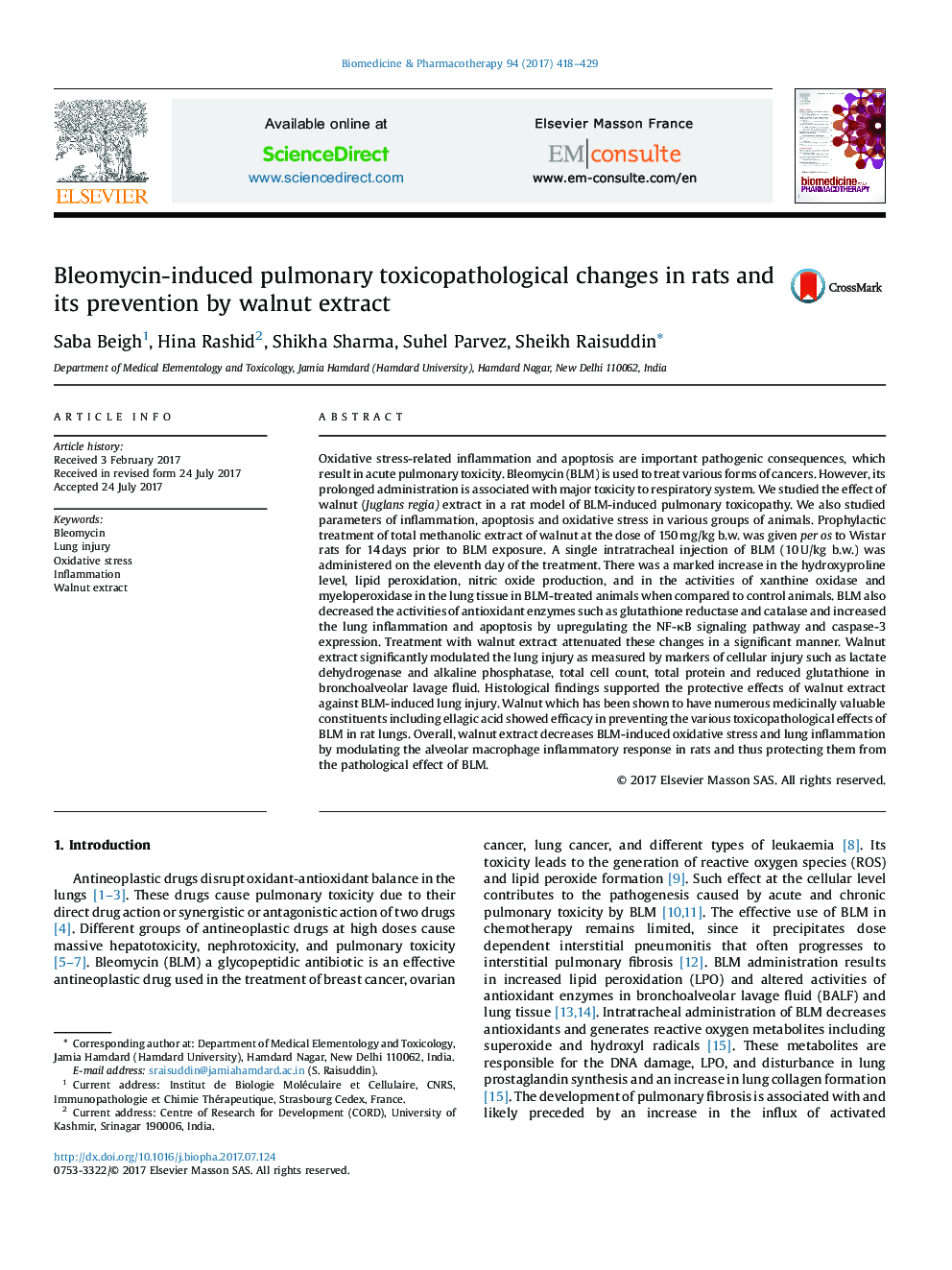| کد مقاله | کد نشریه | سال انتشار | مقاله انگلیسی | نسخه تمام متن |
|---|---|---|---|---|
| 5552852 | 1557948 | 2017 | 12 صفحه PDF | دانلود رایگان |
Oxidative stress-related inflammation and apoptosis are important pathogenic consequences, which result in acute pulmonary toxicity. Bleomycin (BLM) is used to treat various forms of cancers. However, its prolonged administration is associated with major toxicity to respiratory system. We studied the effect of walnut (Juglans regia) extract in a rat model of BLM-induced pulmonary toxicopathy. We also studied parameters of inflammation, apoptosis and oxidative stress in various groups of animals. Prophylactic treatment of total methanolic extract of walnut at the dose of 150 mg/kg b.w. was given per os to Wistar rats for 14 days prior to BLM exposure. A single intratracheal injection of BLM (10 U/kg b.w.) was administered on the eleventh day of the treatment. There was a marked increase in the hydroxyproline level, lipid peroxidation, nitric oxide production, and in the activities of xanthine oxidase and myeloperoxidase in the lung tissue in BLM-treated animals when compared to control animals. BLM also decreased the activities of antioxidant enzymes such as glutathione reductase and catalase and increased the lung inflammation and apoptosis by upregulating the NF-κB signaling pathway and caspase-3 expression. Treatment with walnut extract attenuated these changes in a significant manner. Walnut extract significantly modulated the lung injury as measured by markers of cellular injury such as lactate dehydrogenase and alkaline phosphatase, total cell count, total protein and reduced glutathione in bronchoalveolar lavage fluid. Histological findings supported the protective effects of walnut extract against BLM-induced lung injury. Walnut which has been shown to have numerous medicinally valuable constituents including ellagic acid showed efficacy in preventing the various toxicopathological effects of BLM in rat lungs. Overall, walnut extract decreases BLM-induced oxidative stress and lung inflammation by modulating the alveolar macrophage inflammatory response in rats and thus protecting them from the pathological effect of BLM.
226
Journal: Biomedicine & Pharmacotherapy - Volume 94, October 2017, Pages 418-429
